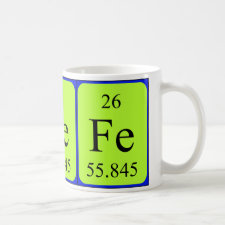
Authors: Çimen D, Göktürk I, Yilmaz F
Article Title: Removal of iron by chelation with molecularly imprinted supermacroporous cryogel.
Publication date: 2016
Journal: Artificial Cells, Nanomedicine, and Biotechnology
Volume: 44
Issue: (4)
Page numbers: 1158-1166.
DOI: 10.3109/21691401.2015.1011810
Abstract: Iron chelation therapy can be used for the selective removal of Fe3+ ions from spiked human plasma by ion imprinting. N-Methacryloyl-(L)-glutamic acid (MAGA) was chosen as the chelating monomer. In the first step, MAGA was complexed with the Fe3+ ions to prepare the precomplex, and then the ion-imprinted poly(hydroxyethyl methacrylate-N-methacryloyl-(L)-glutamic acid) [PHEMAGA-Fe3+] cryogel column was prepared by cryo-polymerization under a semi-frozen temperature of - 12°C for 24 h. Subsequently, the template, of Fe3+ ions was removed from the matrix by using 0.1 M EDTA solution. The values for the specific surface area of the imprinted PHEMAGA-Fe3+ and non-imprinted PHEMAGA cryogel were 45.74 and 7.52 m2/g respectively, with a pore size in the range of 50-200 μm in diameter. The maximum Fe3+ adsorption capacity was 19.8 μmol Fe3+/g cryogel from aqueous solutions and 12.28 μmol Fe3+/g cryogel from spiked human plasma. The relative selectivity coefficients of ion-imprinted cryogel for Fe3+/Ni2+ and Fe3+/Cd2+ were 1.6 and 4.2-fold greater than the non-imprinted matrix, respectively. It means that the PHEMAGA-Fe3+ cryogel possesses high selectivity to Fe3+ ions, and could be used many times without significantly decreasing the adsorption capacity
Template and target information: iron ions, ferric ion, Fe(III)
Author keywords: affinity, Cryogel, iron removal, metal detoxification, molecular recognition



Join the Society for Molecular Imprinting

New items RSS feed
Sign-up for e-mail updates:
Choose between receiving an occasional newsletter or more frequent e-mail alerts.
Click here to go to the sign-up page.
Is your name elemental or peptidic? Enter your name and find out by clicking either of the buttons below!
Other products you may like:
 MIPdatabase
MIPdatabase









